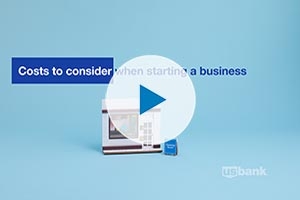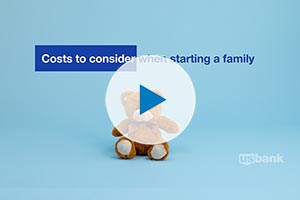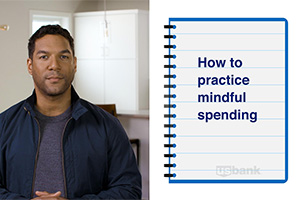Once you have a budget in place, stick to it with an expense-tracking method that works for you.
If a vibrant social life is important to you, we know it’s difficult to turn down post-work happy hours. But those paired with lunches out and afternoon matcha pick-me-ups can really add up. Take control of your account balance and make a habit of tracking your spending.
Start by creating a budget, if you haven’t already. (It’s hard to know where you’re overspending if you haven’t determined your typical expenses.) Then experiment with different ways of monitoring your cash flow. There’s no one-size-fits-all solution: The best tracking method for you is the one you’ll stick to. Read on for five ideas to try.
1. Open separate bank accounts
If you’re a visual person, compartmentalizing your money may help you track your spending. For example, consider opening another bank account – separate from bills and savings – purely for “fun money.” Designate a small percentage of every paycheck to this fund. Tap into it for non-necessary items, such as dining out, new clothes or concert tickets. But once the balance hits zero, don’t allow yourself to spend any more.
2. Download an app
If convenience and accessibility are important to you, downloading a budget app on your phone. It allows on-the-go monitoring of your spending with the swipe of a finger. Countless third-party apps are available. Or check with your bank to see if it offers a mobile banking solution with an expense-tracking feature. The new U.S. Bank Mobile App, for example, has a Money Mentorship component. It analyzes spending habits and helps you better understand where your money is going.
3. Label envelopes
Carrying a debit or credit card in your wallet sometimes makes it too easy to go over budget. That’s why the envelope method works well for people prone to throwing extra items into their cart when they shop.
Using your budget as a guide, withdraw the cash you allocated for items like food, gas, makeup and entertainment. And then put the amounts into their respective envelopes (label them to avoid confusion). The next time you need groceries or want to purchase movie tickets, you must use the money from the designated envelope. And when it’s gone, it’s gone.
4. Break out the pen and paper
Sometimes the simplest solutions work best, and there’s nothing wrong with old-fashioned pen-and-paper tracking. We even created a printable weekly spending journal to help get you started. Every time you swipe your card or fork over cash, write down the item and the amount, no matter how small. The basic act of putting pen to paper and acknowledging your spending may make you more money aware.
5. Create a spreadsheet
Many people love spreadsheets for expense tracking since the columns are easy to customize to individual needs. Plus, they do a lot of the calculating legwork for you. Hold onto receipts or keep track of purchases with pen and paper. Then transfer the dollar amounts to your spreadsheet on a daily or weekly basis.
Over time, you’ll be able to flip through months of spending-habit data. This will help to both identify your weak spots and celebrate how far you’ve come on your financial wellness path.
It’s easy to overlook small purchases. By keeping track of your expenses, down to the penny, you’ll have a better understanding of your purchasing habits and that may inspire you to spend that money elsewhere. Perhaps it could go into a vacation savings fund. Or you could allocate it toward student loans to pay them down faster. Realizing the impact small purchases can have on your finances may cause you to think twice before swiping your card.
Inspired to save even more? Here are simple strategies for saving on daily expenses.















































































